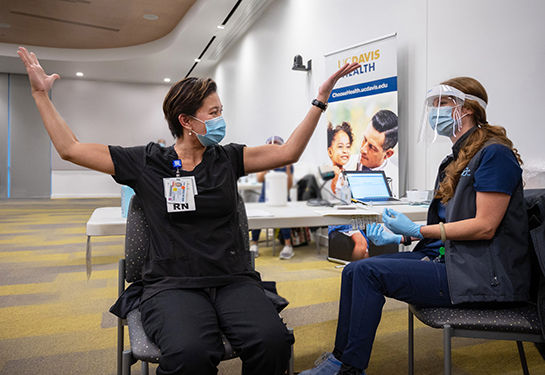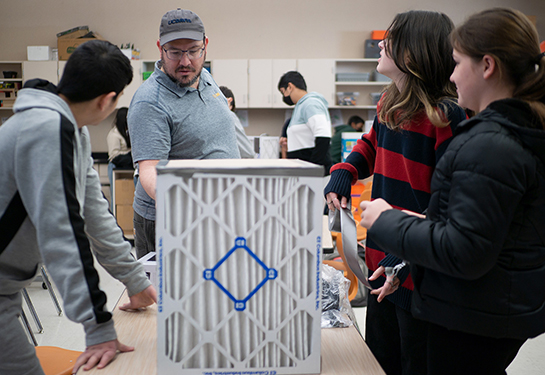How to protect yourself from COVID subvariant BA.5
Forget Delta, Alpha and the original Omicron variant.
The latest Omicron subvariant BA.5 is a whole different animal. Its most defining factor? It is the most easily transmissible COVID variant to date, able to evade previous immunity from COVID infection and vaccination.
According to the Centers for Disease Control and Prevention (CDC), as of yesterday, BA.5 accounted for more than 75% of the country’s new COVID cases. The numbers continue to grow. The CDC reports an average of 122,639 new cases of COVID daily. The CDC also reports daily averages of 5,762 new hospital admissions and 336 new deaths from COVID.
“The main reason this variant has become the predominant one that is now circulating is that it is able to evade previous immunity,” said Dean Blumberg, chief of pediatric infectious diseases at UC Davis Children’s Hospital. “Even people who have partial immunity from a previous infection or vaccination can still have a breakthrough infection.”
That means even if you were infected in 2020 with Delta or even Omicron BA.1 last winter, you can still get BA.5. Your previous immunity does not protect you from the latest strain.
Reported symptoms of BA.5 are similar to previous COVID variants: fever, runny nose, coughing, sore throat, headaches, muscle pain and fatigue.
“The good news is that the vast majority of breakthrough infections now are outpatient illnesses. They are not resulting in the kind of severe illness that we saw earlier in the pandemic when no one had immunity, which led to increased hospitalizations and deaths.”
But the bad news is that even if you have been infected with other strains, including previous Omicron strains, you can still get infected with BA.5.
Emerging research is finding that with each repeat COVID infection – even asymptomatic infection -- you increase your risk for complications including stroke, heart attack, diabetes, digestive and kidney disorders and long-term cognitive impairment, including dementia.
Each reinfection also carries with it the risk of Long COVID, a syndrome with ongoing COVID symptoms that can last for weeks or months after infection.
So, what can people do to defend against the latest variants?
- Ensure you are up-to-date with your COVID vaccinations and boosters. “There is abundant evidence that being vaccinated and getting all of the boosters that you are eligible for helps protect you against severe disease,” Blumberg said. The CDC recently released data that showed the risk of death from COVID was four times higher for those over 50 who had just the first booster, compared with those who had two boosters. This is especially key for those who are over 50 and immunocompromised.
- Continue to wear a well-fitted face covering (N95 or KN95, if possible) when you are indoors and you’re not able to socially distance from people outside of your household. “Continue to mask if you are at risk for severe disease or if you are worried about that,” Blumberg said.



